#breed: zebu
Note
do you have a favorite cow breed??
zebu my beautiful zebu. oh so beautiful angel.


like to slap his brisket reblog to slap his brisket
4K notes
·
View notes
Text
#HumpDay anyone? 😉

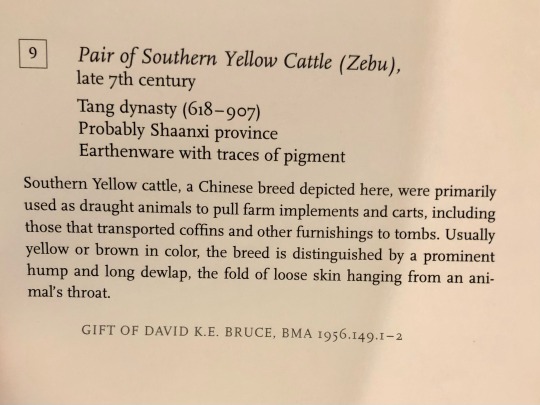
Pair of Southern Yellow Cattle (Zebu)
China (probably Shaanxi province), Tang dynasty (618-907), late 7th century
earthenware w/ traces of pigment
Baltimore Museum of Art
“Southern Yellow cattle, a Chinese breed depicted here, were primarily used as draught animals to pull farm implements and carts, including those that transported coffins and other furnishings to tombs. Usually yellow or brown in color, the breed is distinguished by a prominent hump and long dewlap, the fold of loose skin hanging from an animal's throat.”
#Zebu#cattle#domesticated animals#livestock#Chinese art#East Asian art#Asian art#ancient art#Tang Dynasty#ceramics#pair#Baltimore Museum of Art#HumpDay#museum visit#animals in art
229 notes
·
View notes
Note
What are your favorite cow breeds?
SO i've answered this question before BUT i want to answer it again but my opinion have slightly changed
i love literally all bovines. they're such a neat type of animal that come in sooo so many shapes and sizes with the connecting factor being incredibly cute and big all across the board.
thhhat being said, i'd say that jersey / holstein cows are still pretty close to the top of my list in faves. jerseys are just. gonjus. pretty pretty shades of brown / orange and decently docile temperaments. also very common around where i live so bonus points for being a type of cow i've interacted with
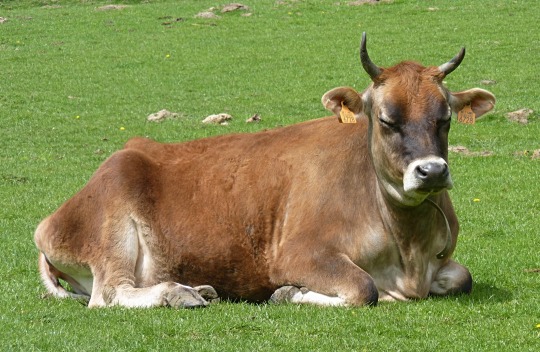
holstiens are your Average Black and White cow ! equally pretty and make up about 90% of cow breeds in the US. they've been around for almost 2,000 years and i can not stress ENOUGH how much of a weak spot i have for animals that have cute pink noses. big big babies ;u; also a cow i have Experience With because i'm in da midwest, so i can drive about 20 mins in any direction and come upon these guys

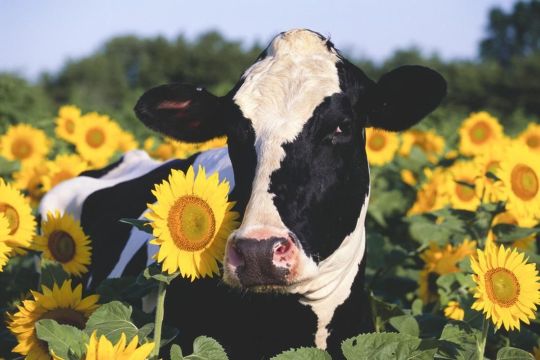
(also only partially related; don't cows just have such kind eyes?? such a warm and soulful animal everytime i look at pics like this i want to kiss them on the tall forehead.)
so, those answers are the same as last time.
BUT.
but. i want to take this post to direct everyone's attention to zebu cattle. because they're absolutely beautiful and interesting and underrated imo.
Feast your eyes on this Beast
theyre just s. so the animal of all time.
#i live kinda close to this ranch that owns a HUGE swath of land for their herd and it's always a pleasure to drive by properly enriched cows#i've seen babies play with other babies and jump on their moms n#a couple of full grown cows running around with eachother#it's lovely#literally the only thing i'll miss about the midwest when i move is cow access lol#but ik there's cows on the west coast so i'm not too worried#ask#anon#talk 2 me about cows i read the entire wikipedia page on bovines
50 notes
·
View notes
Note
I used to work on a farm that Zebu cows!!! They do stay small:) tallest we had a was a bull that came up to my thigh (I’m 5’4). I was so startled the first time he did it! They do have horns, so I was mildly alarmed, until our director laughed and explained that he’s just friendly and wants you to pet him. Probably the friendliest breed of cows I’ve ever met. We had one that would try to nudge any pregnant women into their pen (very gently). Took awhile to figure out the trend, but this farm was part of a Krishna temple, so we got a lot of visitors! Our director is the one who figured it out, if I’m remembering correctly.
Anyway, Zebu are dears and some of my favorite cows:] I could talk about them for hours but I’ll leave you with this. Have a nice day!!!
wooooah! that's amazing. please if you have any other zebu facts to share (or any other animals) please let me know, especially personal experiences... I love hearing about these things
39 notes
·
View notes
Text
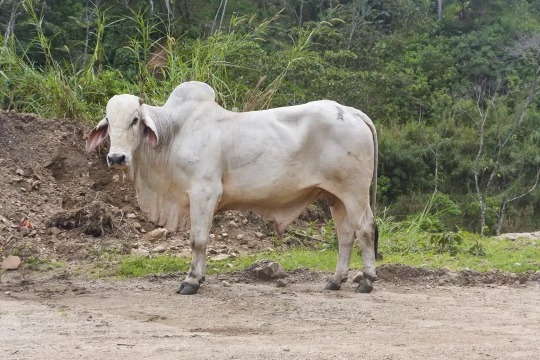
Zebu cattle (Bos indicus)
Identifiable by their shoulder hump, neck dewlap, and large, floppy ears, zebu are a unique species (or subspecies) of cattle originating from India. They were domesticated from the now-extinct auroch some 8000 years ago. Thanks to their adaptations for hot, dry climates, zebu-derived breeds are cultivated in Brazil, Madagascar, Australia, and elsewhere.
#markhors-menagerie#animal facts#animals#biology#fun facts#ungulates#even toed ungulates#ruminants#bovidae#Bovini#cattle#zebu cattle
2 notes
·
View notes
Text
The thing I learned in vet school that stayed with me the most was that, over here, most beef cattle are Nelore mixes and most dairy cattle are Holstein mixes and these breeds look very different from each other because Nelore are a zebu breed and Holstein are a taurine breed. So whenever spot a cow on a pasture on the side of the road while on a roadtrip I don’t just go “COW” anymore, I go “BEEF COW” or “DAIRY COW” to the delight (annoyance) of my family.
27 notes
·
View notes
Text




A few Christmas Eve foals! Very happy with these four!
The donkey (top left) is from a line of donkeys meant to have good spend stats and she doesn't disappoint in that area plus she's just super cute!
Top right is a Friesian/Belgian cross. He's gonna be the last foal out of his mother, Nova, who is a beautiful and tall Belgian that I adore. Perfect final foal for her because his personality is AMAZING and his color is exactly what I wanted.
Bottom left is another Friesian cross. Also descended from Nova the Belgian, but a few generations down the line. Stunning and a great personality!
And finally on the bottom right is a "cow pony" which is a new breed recently added to the game meant to look like cows. Specifically this one is supposed to look like Zebu. This cute calf inherited all the genes I hoped he would from his parents and has a great personality, so my cow pony line is off to a great start thanks to him!
So a pretty good Christmas Eve as far as foals go. I have a bunch more due tomorrow so I'm looking forward to seeing if I get any gems there.
3 notes
·
View notes
Text
Maybe I should tackle my cow breeding projects next. I have a few selective breeding projects for cows but I never was completely happy with them. Part of the problem is I can't decide if I want fluffy highland type cows or heat-resistant zebu type cows because I adore both. 😭
5 notes
·
View notes
Note
Hii do you know why cow breeds in hot climates often have a hump on their neck? Do they store water in there like a camel?
hiiiiiiii !!! for those who dont know, zebu cattle have a big hump of muscle on their back!!
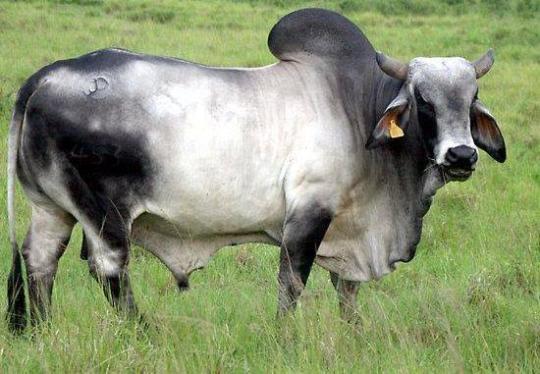
they have a LOT of blood vessels in there, along with their dewlaps, so we think theyre probably used for thermoregulation! i think it makes them sooo cute

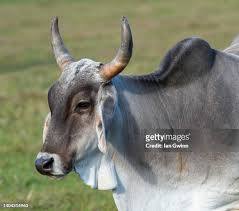
250 notes
·
View notes
Text
I think that @candyfordinner Teddy made a very good point in this post. What is wrong with Madagascar? King Julien the second has the answer.
I also think that there is something wrong with the Madagascar in our beloved show and the movies. In our reality, there are people living there along with their domestic animals, especially zebu. It's said that every family owns atleast one zebu. It's a cow that came from India.
At first I thought, it's a kids show, the lemurs are the people of Madagascar. Then I started thinking deeply. There are people in the series! Like Teddy said the scientists who kidnapped Mort a number of times, the French people who eat snails, (yes! Because they know people won't come for them in Madagascar, they migrated there), when the mango monster heads to the mainland, Timo makes a call and a human sends a missile destroying it and the Russians! It's as if they 'are' people. They acknowledge the fact that people live in the mainland and the dolphins sell stuff to the Russians.
I did some research and my theory is that,( in AHKJ,) people used to live in Madagascar. The people of Madagascar were stricken by poverty and they had to eat the most abundant species of animals in Madagascar, the lemurs. They also considered the Aye aye as a bad omen and killed it on the spot. This much is true for the real Madagascar. Now in the series, due to these reasons, the lemurs became endangered and they had to protect themselves from the humans. They wiped out the humans in Madagascar with the help of foosas and other powerful animals. As we see in the series, foosas and crocodiles help king julien sometimes. When did it happen? According to my calculations, during the reign of King Julien the second. We know that he married a royal cow. I always thought. Why a cow? Do cows live in Madagascar? Throughout the series, we haven't seen a single cow except the one that appears in the Book of Julien kings.

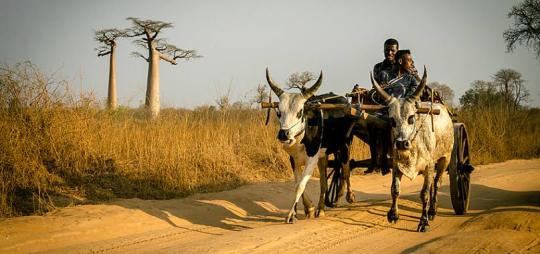
This is an image of the zebu cow in Madagascar. There were no cows in Madagascar before and zebu was imported to Madagascar from India. They were mixed with African zebus to form new breeds and hence, if cow wasn't mentioned in all hail king Julien, we could say that humans never lived there but king julien second proves that there had been humans. He ate his wife, the cow. It symbolises the lemurs victory over human civilization. The cow is a symbol of Power to people of Madagascar and king julien crushed that power. See, zebu is even in their coat of arms. This even strangely remind me of King Julien's crown, which could be a distortion of the coat of arms, symbolising the lemurs victory over the humans.
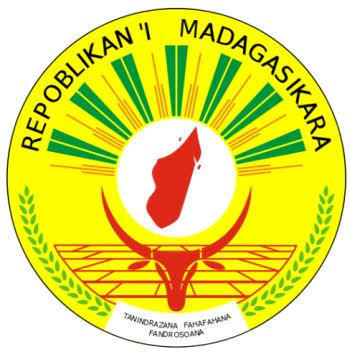
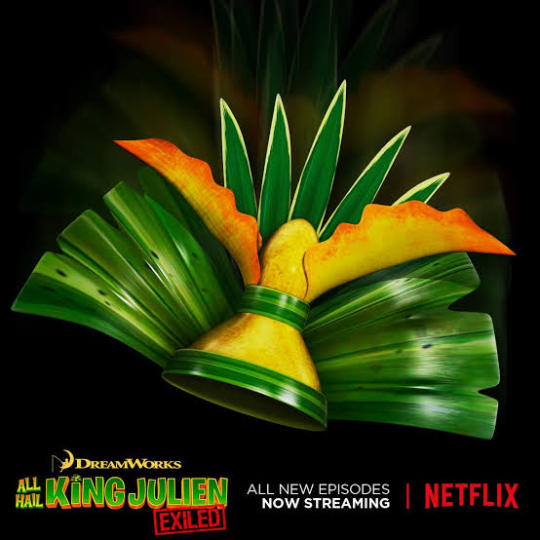
King Julien the second's action is not a small thing, if you think about the people of Madagascar. Cow is a sacred animal to them and it is that animal we see getting eaten in All hail king Julien. It could have been included to show how much the lemurs hate humans for what they had done to them but the new generation doesn't know any of this. If king Julien really wanted good milk he would have kept his wife alive but he ate her and drank gecko milk, which caused an allergy and grandma rose killed him
From then on, no human dared to live in Madagascar and the snails might have migrated there according to Jingle-Jangle's prophecy that Maurice will save them. Jingle Jangle must have heard how bravely the Aye ayes fought for justice. Finally, animals destroying humans is not something we haven't seen in all hail king Julien. Remember the monkeys. They did it.
85 notes
·
View notes
Text
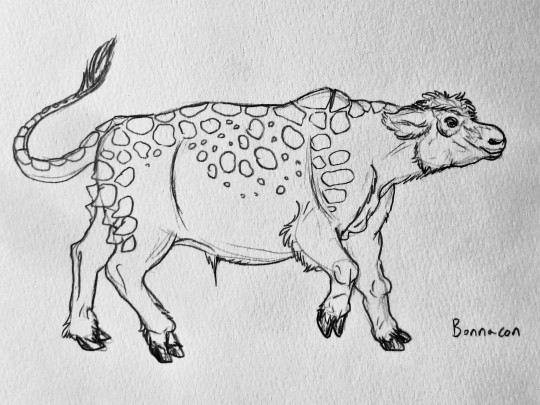
Ancardia's Unusual Animals--The Bonnacon
Classification: Beast (bovine)
Habitat: Grass and scrublands in the Western regions, especially the Ayn Coastlands, Silver Coastlands, and parts of the Fallar and Western Heartland.
Bonnacon are perhaps among the most bizarre wild bovines to exist in Ancardia, and this is chiefly because of their main form of self-defense. While most hooved beasts have great speed and awareness, or great size and impressive horns, bonnacon have none of these but one very strange natural weapon. With the back, hips, shoulders and tail covered in squat, tough keratin scales, bonnacon average as slightly smaller than a domesticated auroch and slightly larger than a gnu, and lack horns altogether. Their only defense is their natural arcane abilities—which are limited to igniting gases from their rears into a sheet of flame that can reach pursuers as far away as 12 meters. This flame is unusually hot, and tends to not only ignite hair, clothes and wooden weapons, but is also hot enough to heat steel and other highly-conductive metals to a burning temperature within 15 seconds, as well as warp and distort glass. A wild creature, the bonnacon is also dangerously skittish, and will bolt and flame at the slightest provocation. The only known natural predators of the bonnacon are the Crocotta and the Antediluvian Dire-Drake, both of which use ambush tactics and superior jaw strength to quickly attack the beast from the front, before it can turn around and become a real danger.
Bonnacon are unlike many wild ungulates in that they don’t live in large herds, most likely due to the issue of friendly-fire if a large group of bonnacon were spooked all at once in close proximity to each other. Bonnacon herds usually number only between 5 and 12 individuals, led by one breeding male along with a few adult females, sometimes also with their adolescent and juvenile young. Bonnacon browse a large variety of tougher vegetation, being very well adapted to semi-arid and dry montane climates, and are especially resilient in areas with a large density of toxic plant species, such as hogweed, daturas, prickly nightshades and euphorbias. It is believed that something to do with the toxicity of the plants it prefers gives it greater ability to shoot fire. Bonnacon are born able to stand and then run within about ten minutes, and area also born able to shoot flame as well, though not as strongly. It takes roughly 2 years for a young bonnacon to grow to close to adult size, though it is only in the third year that it is fully developed.
In older Ages, the Old Kingdoms Empire’s nobility often considered hunting bonnacon to be a mark of high status—no doubt due to the sheer suicidal nature of any activity that involves approaching such a beast, especially of chasing one. Dogs and servants on horseback were usually sent ahead of their leigelords with the rationale being to bait the bonnacon into expending all of its ammunition before the lords on horseback themselves were meant to overtake the animal and attack it with spears or shortbows; several ancient nobles famously were torched to death as the creatures’ defended themselves anyways, and one notable taxidermized bonnacon specimen from the 4th Age is nowadays believed to be a hoaxed example made out of attaching pieces of tortoise shells to a dead calf. Among other cultures, bonnacon are sometimes considered pests. Sahel hurthling tribes who keep dairy auroch, zebu, and other bovines are often tasked with creating scarecrow-like puppets they can raise up and deploy from afar in order to scare off roaming wild bonnacon—as bonnacon can interbreed with some other bovines and result in a heifer calf that will grow to produce a foul, sulphureous milk. Others, like the Frost Giants and Sostunian tribes, are known to create spiked stone walls outside of their normal spiked wooden fencing separated by a few meters, strictly to keep bonnacon from getting too close to wooden structures and crop fields and ending up incinerating them and the fences if they are scared away by guard animals or farmers.
#ancardia#ancardian homebrew#bestiary#mixed media#creatures#animals#Ancient Domains of Mystery#ADOM#Dnd-like#Bonnacon#the fire-farting legendary cow#yes really
2 notes
·
View notes
Text
All You Need to Know About The Mini Cow Breeds
Mini cows or miniature cows are the perfect option for anyone looking for a pet that’s easy to take care of, doesn’t mind being confined to a small space, and doesn’t need much exercise.
Some popular mini cow breeds are Belted Galloway, Texas Longhorn, Dexter, Zebu, Jersey, Hereford, and Panda. Some breeds may be less practical because of their horns and the accidents that may ensue because of…

View On WordPress
0 notes
Text
Day 117 19 September
This was a big day for most people as we approached the Diomede Islands in the Bering Strait. But first, a useless statistic. Our expedition was only the 390th successful crossing of the Northwest Passage ever and one of only 31 that traversed it in 2023. Alphabetically, we were number 383 of the 390 ships that have made the journey – way down the bottom. A little odd because there are still seven letters after S in the alphabet – but maybe nobody names their ships Xerus, Yak or Zebu.
Big Diomede on the west (aka Tomorrow Island) is owned by Russia but Little Diomede (aka Yesterday Island) is owned by the USA – with the International Dateline running between them. The islands are only about two kilometres apart and we circumnavigated Little Diomede, assiduously hugging our side of the Dateline to avoid an international incident and potentially WWIII. The whole area was alive with birds of many species and many thousands of photographs were taken by those on board. I think I took about five hundred that day. We spent quite some time close to the island as we explored the coast, including the defunct crumbling remains of what was a small Inuit village (with some US military presence) on the western side facing Russia. They apparently have a somewhat bigger military base on Big Diomede but not much else.
From there we sailed about twenty kilometres to Fairway Island, a small steep-sided (to the point of inaccessibility) uninhabited island except for many thousands of breeding pairs of seabirds. There were birds everywhere, many auklets and murres, kittiwakes and shearwaters, but many other species too. More photos were essential!
Then it was on to King Island. (How many King Islands are there in the world? I checked – at least 16 official ones, with numerous Kings Islands, and a great many King Someone’s Islands too). More abandoned, derelict villages and hundreds of thousands of birds – maybe twenty species – they were enough to delight anyone interested in our avian friends.
There was an auction at night (there always is – in favour of a relevant good cause) but we chose bed instead.
0 notes
Text
4.2Kiloyear event(Drying of Saraswati)
22nd century bc. a century of massive drought globally. this could have been the reason for drying up of saraswati and thar desert was formed . People of indus civilisation were forced to migrate westwards and eastwards.
Zebu cattle - Indian origin cattle. About 4200 years ago, indian zebu bulls started breeding with female bostorus cattle across the fertile crescant region (turkey,iraq,egypt). Indian people migrated to these regions.
The yamnaya invasion however seems to preceed this with it occuring around 4000BC-5000BC. Also yamnaya were fierce horse riders.
0 notes
Text
Why is the Gir cow a better breed than other native cows?
What are the top 5 A2 desi milking cows?
The Remarkable Gir Cow: Exploring Its History and Superiority The Gir cow, which is indigenous to Gujarat's Gir forest region, has a fascinating history and stands tall among indigenous cow breeds. Its uniqueness and superiority can be seen in a variety of ways.
Let's look at the Gir cow's fascinating history, why it's considered superior to other indigenous breeds, and learn about the top five A2 milk-producing desi cows, their characteristics, and the nutritional value of A2 milk.
The History of Gir Cow:
The Gir cow has a long, amazing history that spans back many centuries. The ancient Zebu cattle, which were valued for their toughness and adaptability, are the breed's ancestors. The Gir cow developed into a separate breed over time which is ideal for the many climatic conditions found in the Gir forest.
Since then, it has come to represent hardiness, strength, and exceptional milk production.
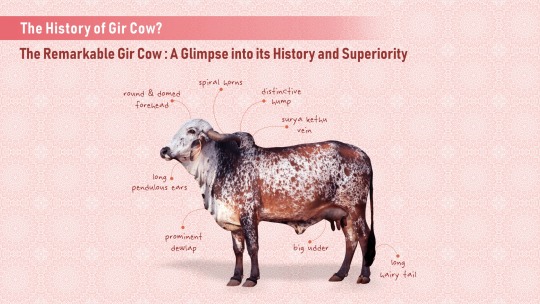
The Superiority of the Gir Cow:
The Gir cow is distinguished from other native breeds by a number of outstanding characteristics, including:
1) The Gir cow's extraordinary flexibility is demonstrated by its capacity to flourish in a variety of conditions, from hot and humid areas to dry terrain.
2) Strong Immune System: This breed has a strong immune system, which makes it less prone to illnesses and ensures the cow's general health and well-being.
3) High Milk Yield: The Gir cow is well known for producing a lot of milk, which makes it a great choice for dairy production. Gir cows are in high demand due to the exceptional quality and quantity of milk provided by A2 cows.
1) Gir Cow:
Gir Cow is known for its high milk production and rich A2 milk. It originated in the Gir forest region of Gujarat, India. Here are its characteristics and nutritional values.
Characteristics:
1) Large breed with a well-developed physique.
2) The colour of the coat ranges from reddish brown to white.
3) Strong and adaptable to various climates.
4) Known for their gentle temperament.
2) Sahiwal:
Another popular breed is the Sahiwal, which is known for its high milk yield and adaptability to hot climates. It originated in Pakistan and India's Punjab region. Here are its nutritional values and characteristics.
Characteristics:
1) Medium to large-sized breed with a sturdy build.
2) Coat color ranges from reddish brown to dark brown.
3) Excellent heat tolerance and disease resistance.
4) Known for their docile nature.
3. Khangrej:
Khangrej is a popular milking breed found in Rajasthan, India's arid regions. It is highly regarded for its high milk yield and ability to thrive in harsh conditions. Here are its nutritional values and characteristics.
Characteristics:
1) Medium-sized breed with a compact body.
2) Coat color ranges from light gray to silver-gray.
3) Well-adapted to drought-prone areas.
4) Known for their strong legs and hard hooves.
4. Khillari:
Killari is a native breed found in the Karnataka and Maharashtra region of India. It is prized for its high milk production and hardiness. Here are it's characteristics and
nutritional values,
Characteristics:
1) Medium-sized breed with a well-built body.
2) Coat color ranges from white to light gray.
3) Adaptable to various climatic conditions.
4) Known for their excellent grazing abilities
5. Tharparkar:
Tharparkar is a well-known milking breed that originated in Rajasthan's Thar Desert. It is appreciated for its adaptability and high milk quality. Here are it's attributes and nutritional values,
Characteristics:
1) Medium-sized breed with a slim build.
2) The colour of their coat varies from white to light grey.
3) They are well-adapted to hot and dry climates
4) It is known for its efficient foraging abilities.
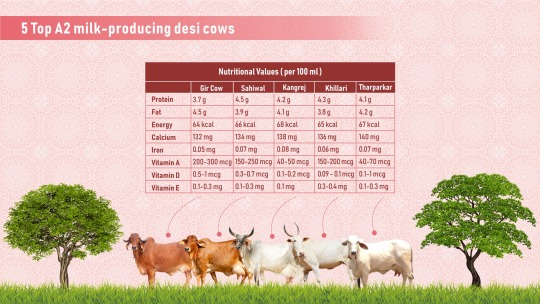
Gir Cow, Sahiwal, Khangrej, Killari, and Tharparkar are among the desi cow breeds that produce nutritious A2 milk with varying protein, fat, energy, calcium, vitamins, and iron content. Incorporating these milk varieties into your diet can help you get the nutrients you need to live a healthy lifestyle.
#chemicalfree#food#food diary#foodblogger#grocery#natural products#organic#no preservatives#healthy food#organic food
0 notes
Photo

Day 1️⃣: Introduction #newyearsamehomestead Hi All! I'm not sure if I've ever done an introduction post 🤣 but I'm Rebeka and that's Josh in the picture. We LOVE Kunekune pigs 🐖 and have 24 permanent residents including 2 house pigs Ripley and Riley, some retired pigs, and then our breeding stock. We do an Airbnb farm tour called Cuddle with Kunekune Pigs and it's always a huge hit. I'm originally from Hawaii 🩴and always wanted a farm. My dad, Dennis, grew up on a farm in upstate NY and always wanted to retire back on the farm. In 2013 we had the opportunity to purchase 10 acres, with a nice house, plus a 4,000 SQ ft metal building with a 2 bedroom apartment built in. It was the perfect setup and Halbert Farm was brought to Texas. In 2016 I met Josh who grew up in Texas and never dreamed of having any animals besides maybe a dog. That quickly changed when he learned that going on a date with me meant working outside till the sun goes down. I work in the IT field 👨💻 from home and Josh does the farm full-time 👨🌾 now. I'm also in the Navy ⚓ Reserves. This is my 20th year and I'll retire in November! We have an Etsy shop with Kunekune Pig related merch. (link in bio) The goal is to have the farm be our sole source of income. We have 3 dachshunds, 2 Kangol Shepherds (livestock guardian dogs), 2 horses, 1 donkey, 7 zebu cows, turkeys, guineas, ducks, and chickens! I ride English and compete in the sport called eventing 🏇with my horse, Selma. Josh and I both figure skate⛸️, we started that hobby a year ago. Josh competes in body building 🏋️♂️ competitions and does personal training. We show the chickens and pigs, maybe one day the cows. I think that sums us up. ☺️ . . . . . . . #farmlifeisthebest #smallfarming #farmlifeforever #eventing #figureskating #supportfamilyfarms #smallfarmlife #farmingfamily #kunekunepigs #farmraised #farmlifeisthebestlife #farmsofinstagram #smallscalefarming #farmanimal #supportyourlocalfarmer #thankafarmer #animalfarm #farmingphotos #urbanhomestead #happychickens #lifeonthefarm #farmerslife #supportlocalfarmers #farmliving #smallfarm #farminglife #urbanfarming #homesteading #chickensofinstagram (at Halbert Farm Kunekune Pigs) https://www.instagram.com/p/Cm7yyHKLyYX/?igshid=NGJjMDIxMWI=
#newyearsamehomestead#farmlifeisthebest#smallfarming#farmlifeforever#eventing#figureskating#supportfamilyfarms#smallfarmlife#farmingfamily#kunekunepigs#farmraised#farmlifeisthebestlife#farmsofinstagram#smallscalefarming#farmanimal#supportyourlocalfarmer#thankafarmer#animalfarm#farmingphotos#urbanhomestead#happychickens#lifeonthefarm#farmerslife#supportlocalfarmers#farmliving#smallfarm#farminglife#urbanfarming#homesteading#chickensofinstagram
1 note
·
View note